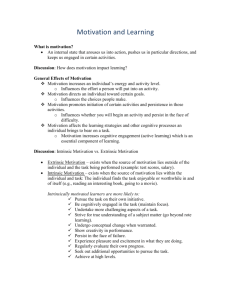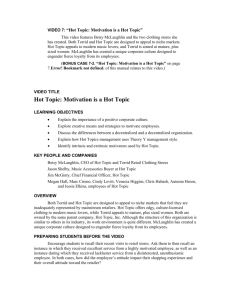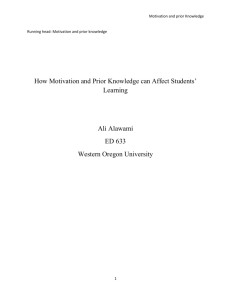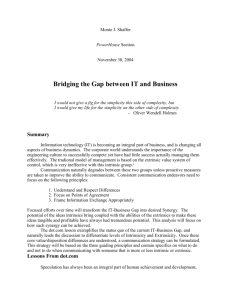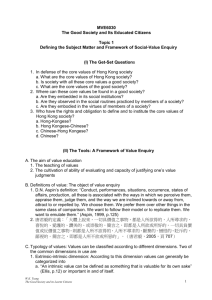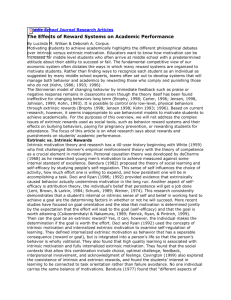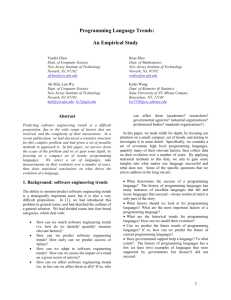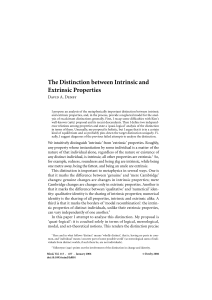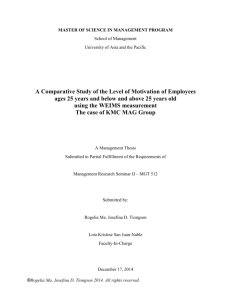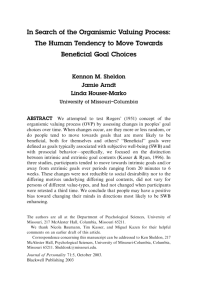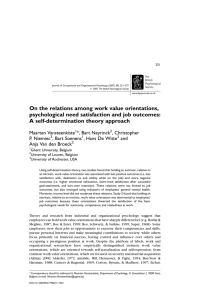Instrinsic and Extrinsic Density Lab
advertisement
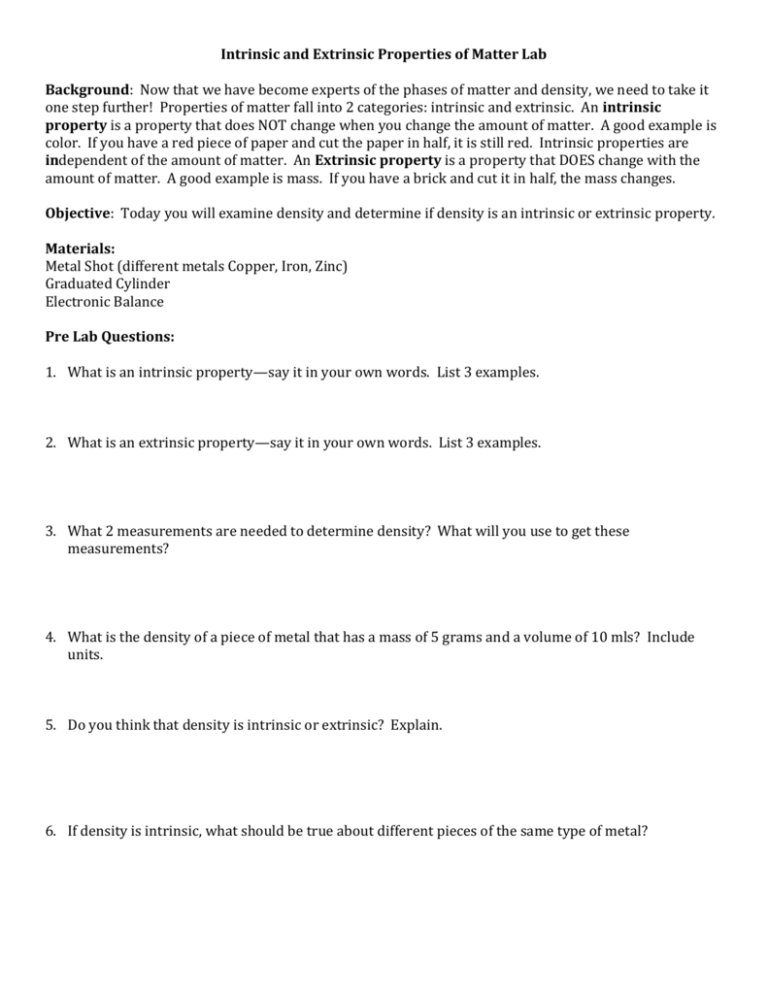
Intrinsic and Extrinsic Properties of Matter Lab Background: Now that we have become experts of the phases of matter and density, we need to take it one step further! Properties of matter fall into 2 categories: intrinsic and extrinsic. An intrinsic property is a property that does NOT change when you change the amount of matter. A good example is color. If you have a red piece of paper and cut the paper in half, it is still red. Intrinsic properties are independent of the amount of matter. An Extrinsic property is a property that DOES change with the amount of matter. A good example is mass. If you have a brick and cut it in half, the mass changes. Objective: Today you will examine density and determine if density is an intrinsic or extrinsic property. Materials: Metal Shot (different metals Copper, Iron, Zinc) Graduated Cylinder Electronic Balance Pre Lab Questions: 1. What is an intrinsic property—say it in your own words. List 3 examples. 2. What is an extrinsic property—say it in your own words. List 3 examples. 3. What 2 measurements are needed to determine density? What will you use to get these measurements? 4. What is the density of a piece of metal that has a mass of 5 grams and a volume of 10 mls? Include units. 5. Do you think that density is intrinsic or extrinsic? Explain. 6. If density is intrinsic, what should be true about different pieces of the same type of metal? Directions: Take 3 pieces of each of the metals and figure out their densities. Use the densities to determine if density is an intrinsic or extrinsic property. Metal Type Mass grams Volume mls Post Lab. 1. What did you determine about the densities of metal 1? 2. What did you determine about the densities of metal 2? 3. What did you determine about the densities of metal 3? 4. Is density intrinsic or extrinsic, explain your answer. Density g/ml 5. If you go to a jewelry store and buy a super swag necklace for _________________ (fill in a name), how can you use density to make sure you are getting a good deal? Hint: Density of gold is 19.32 g/ml. 6. Let’s say the storeowner, wants to sell you a bracelet of solid gold for 2,000$ and tells you it’s a great deal but you take the mass (10 grams) and the volume (5 ml). You determine the density is _________________. What should you tell the storeowner? 7. Identify the following properties as extrinsic and intrinsic: ColorMassVolumeMelting PointLengthPhase of MatterMagnetism (is it magnetic)Conductivity (can it conduct electricity)Freezing Point-




